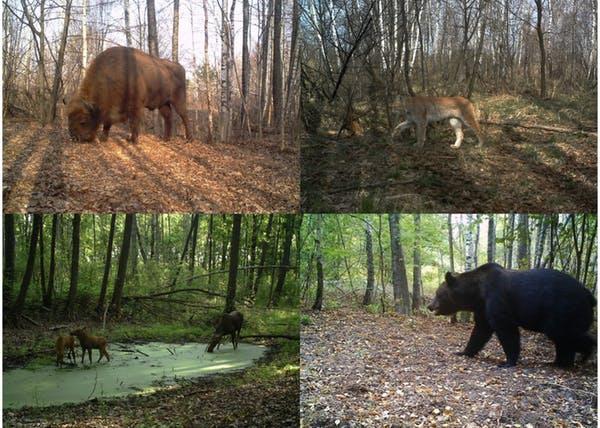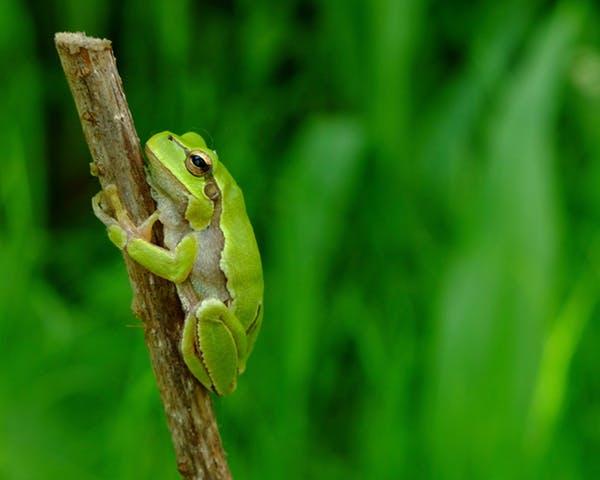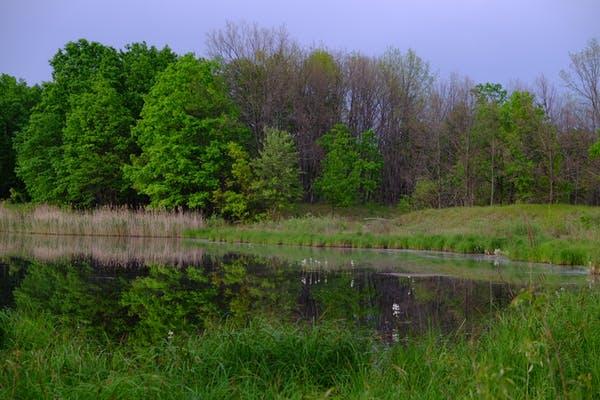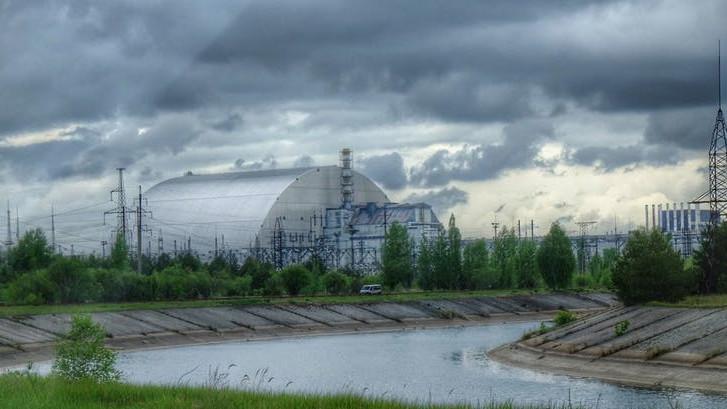Chernobyl has become a refuge for wildlife 33 years after the nuclear accident
Chernobyl Nuclear Power Plant (Ukraine) with the new safe confinement building over the number 4 reactor unit in May 2017.
Reactor number four of the Chernobyl Nuclear Power Plant suffered an explosion during a technical test on April 26, 1986. As a result of the accident, in the then Soviet Union, more than 400 times more radiation was emitted than that released by the atomic bomb dropped on Hiroshima, Japan, in 1945. It remains the largest nuclear accident in history.
Decontamination work began immediately after the accident. An exclusion zone was created around the plant, and more than 350,000 people were evacuated from the area. They never returned. And severe restrictions on permanent human settlement are still in place today.
Related: HBO’s ‘Chernobyl’ revisits nuclear catastrophe
The accident had a major impact on the human population. Although there aren’t any clear figures, the physical loss of human lives and physiological consequences were huge. Estimates of the number of human fatalities vary wildly.
Related: Despite the risks, holdouts refuse to abandon Ukraine’s radiation hotspots
The initial impact on the environment was also important. One of the areas more heavily affected by the radiation was the pine forest near the plant, known since then as the “Red Forest.” This area received the highest doses of radiation — the pine trees died instantly and all the leaves turned red. Few animals survived the highest radiation levels.
Therefore, after the accident it was assumed that the area would become a desert for life. Considering how long it takes some radioactive compounds to decompose and disappear from the environment, the forecast was that the area would remain devoid of wildlife for centuries.
Chernobyl wildlife today
But today, 33 years after the accident, the Chernobyl exclusion zone, which covers an area now in Ukraine and Belarus, is inhabited by brown bears, bison, wolves, lynx, Przewalski horses and more than 200 bird species, among other animals.
In March 2019, most of the main research groups working with Chernobyl wildlife met in Portsmouth, England. About 30 researchers from the United Kingdom, Ireland, France, Belgium, Norway, Spain and Ukraine presented the latest results of our work. These studies included work on big mammals, nesting birds, amphibians, fish, bumblebees, earthworms, bacteria and leaf litter decomposition.
Related: 30 years after Chernobyl, these Ukrainian babushkas are still living on toxic land
These studies showed that at present the area hosts great biodiversity. In addition, they confirmed the general lack of big negative effects of current radiation levels on the animal and plant populations living in Chernobyl. All the studied groups maintain stable and viable populations inside the exclusion zone.
A clear example of the diversity of wildlife in the area is given by the TREE project (TRansfer-Exposure-Effects, led by Nick Beresford of the UK’s Centre for Ecology and Hydrology). As part of this project, motion detection cameras were installed for several years in different areas of the exclusion zone. The photos recorded by these cameras reveal the presence of abundant fauna at all levels of radiation. These cameras recorded the first observation of brown bears and European bison inside the Ukrainian side of the zone, as well as the increase in the number of wolves and Przewalski horses.

Our own work with the amphibians of Chernobyl has also detected abundant populations across the exclusion zone, even on the more contaminated areas. Furthermore, we have also found signs that could represent adaptive responses to life with radiation. For instance, frogs within the exclusion zone are darker than frogs living outside it, which is a possible defense against radiation.

Studies have also detected some negative effects of radiation at an individual level. For example, some insects seem to have a shorter lifespan and are more affected by parasites in areas of high radiation. Some birds also have higher levels of albinism, as well as physiological and genetic alterations when living in highly contaminated areas. But these effects don’t seem to affect the maintenance of the wildlife population in the area.
The general absence of negative effects of radiation on Chernobyl wildlife can be a consequence of several factors:
First, wildlife could be much more resistant to radiation than previously thought. Another alternative possibility is that some organisms could be starting to show adaptive responses that would allow them to cope with radiation and live inside the exclusion zone without harm. In addition, the absence of humans inside the exclusion zone could be favoring many species — big mammals in particular.
That final option would suggest that the pressures generated by human activities would be more negative for wildlife in the medium-term than a nuclear accident — a quite revealing vision of the human impact on the natural environment.
The future of Chernobyl
In 2016 the Ukrainian part of the exclusion zone was declared a radiological and environmental biosphere reserve by the national government.

At present, several projects are trying to resume human activities in the area. Tourism has flourished in Chernobyl, with more than 70,000 visitors in 2018. There also plans for developing solar power plants in the area, and for expanding forestry work. Last year, there was even an art installation and techno party inside the abandoned city of Prypiat.
Over the past 33 years, Chernobyl has gone from being considered a potential desert for life to being an area of high interest for biodiversity conservation.
It may sound strange, but now we need to work to maintain the integrity of the exclusion zone as a nature reserve if we want to guarantee that in the future Chernobyl will remain a refuge for wildlife.![]()
Germán Orizaola is a researcher at the Programa Ramón y Cajal at the Universidad de Oviedo.
This article is republished from The Conversation under a Creative Commons license. Read the original article.
Our coverage reaches millions each week, but only a small fraction of listeners contribute to sustain our program. We still need 224 more people to donate $100 or $10/monthly to unlock our $67,000 match. Will you help us get there today?
